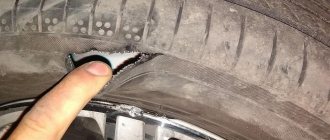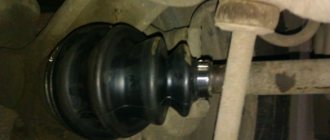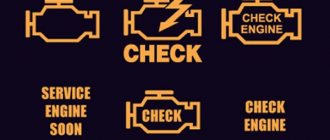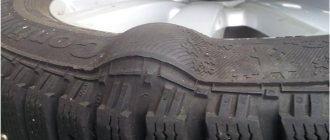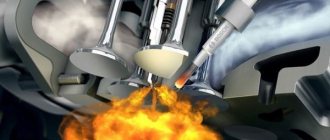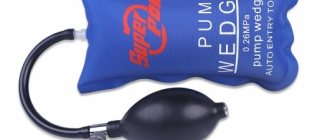Problems associated with wheels constantly accompany outdoor enthusiasts and athletes. While professionals have a whole staff of employees servicing their bikes, amateurs have to independently decide why a bicycle tire goes flat.
An annoying nuisance that seems impossible to avoid. But this is only at first glance. Often we ourselves are to blame for a flat bicycle tire. What is it about? Read on.
Tube or tubeless tires?
Most modern cars are equipped with tubeless tires. In the event of a puncture, unlike tube tires, they allow you to maintain pressure in the wheel for some time, which is very important from a safety point of view. There are situations when the owner of tubeless wheels drives with a nail in the tire for several months before the puncture makes itself felt. Of course, we are not talking about significant damage. In turn, the tube wheel immediately deflates when punctured. Just imagine what this can mean at speed. Therefore, experts strongly recommend that everyone who still has tube tires abandon them.
The dangers of driving with a flat tire
First of all, you need to understand that a tire is not just a piece of rubber put on a wheel. It is a complex product consisting of several layers. Each of them is made from special fibers with different densities. Therefore, a lot depends on the location of the puncture and its size.
If the wheel is just flat, then even in this case you need to be prepared for the following consequences:
- A damaged wheel will not absorb shock, unlike other wheels. Therefore, the car will begin to carry from one side to the other. Moreover, the higher the speed, the greater the imbalance will be observed.
- Fuel consumption will increase.
- The load will begin to be distributed unevenly, which will most likely lead to the appearance of “hernias”. Even if such a wheel is repaired, it will last only a little.
- Inevitably, the tire will deflate more and more, causing the side of the car to come into contact with the road.
- The disc will put more and more pressure on the rubber, which will eventually lead to it completely tearing. The only thing left to do is throw this tire away.
- If the tire breaks, it will completely fly off the rim.
Under the weight of the car, a tire without air will turn into a rag. If you accelerate too much, you will most likely damage the tire carcass and even the body itself. Of course, this does not happen to owners of self-supporting tires such as Run Flat. But even such tires can withstand loads when driving at a speed of no more than 120 km/h (as the manufacturers themselves say), but in reality you should not exceed 60-80 km/h.
But, if it turns out that the tire is punctured, and there is a car service nearby, then theoretically you can get to it, but only by following a few recommendations, and if the distance does not exceed several kilometers. Otherwise, the result may be like in the video.
Why does the tire go flat?
Having seen (or felt) that their favorite car is warped due to a flat tire, every driver rushes to find the source of this problem. The main reasons why a tire goes flat:
- The most common option is a tire puncture. This usually happens due to collision with a nail, wire and other small metal objects. If a tubeless tire goes flat due to a puncture, you can often drive to the nearest service station with periodic pumping, and sometimes even without them.
- Another fairly common problem is wheel cuts. If the puncture in most cases occurs on the tire tread, then there are also cuts on the sides. A cut in the running part (tread) is rare, since it consists of a fairly thick and dense layer of rubber. Much more often this problem occurs on the side of the tire, which is much thinner. This happens upon contact with sharp objects. These can be the edges of the tracks, curbs (from which metal reinforcement often sticks out) and other protrusions. If the cut does not reach the court, the tire usually does not go flat. But if the rubber is cut deeply, then you will know about it much faster than a puncture, since the cut surface is larger. Unfortunately, if this problem occurs on the side of the wheel and causes serious damage to the rubber, then it most likely cannot be fixed.
- Sometimes a tire goes flat due to disc deformation, which leads to depressurization of the place where the tire is adjacent to it. The disc can be damaged either due to poor road surface, or due to the inexperience of the driver (the disc hitting the curb when parallel parking and other mistakes). Disc straightening helps solve this problem without harming the tire itself.
- Depressurization of the spool or nipple (valve) is another reason why a tire often goes flat. This happens either due to mechanical stress on these elements or due to their careless installation. The second reason is more common, since it is quite difficult to hit the nipple with the spool, because it is “hiding” behind the disk. By the way, spool valves come in long and short designs. The first option, as practice shows, is more reliable.
Let's take a closer look at where a tire can go flat.
1 Side tire cut or puncture
Unfortunately, if the side cut of the tire is significant, then this is practically the death of the tire. There are technologies like: “Repairing tires with side cuts ,” but they all spoil the uniformity and balance of the tire, and most importantly, they do not restore the structure of the tire.
When a tire sidewall is cut, the cord of the tire's internal structure (nylon or nylon threads) is often cut, which cannot be repaired. No one guarantees that after such a repair the tire will not burst while driving, especially at high speed, when the tire is subjected to great physical and thermal stress.
Repairing cut tires is very dangerous!
Some tire service workers suggest putting a tube inside the tire, but this method of tire repair also does not stand up to criticism. The fact is that the camera can bubble out of the side cut and burst instantly!
Among other things, in a tubeless tire, when using a tube, voids are created inside the tire, since the air has nowhere to escape in the tubeless design. And because of them, additional friction arises, which heats up the tire. The chamber gets wiped from the inside and loses pressure, putting you in danger.
Therefore, no matter how sorry it is for a wheel that is still completely unworn (and sometimes practically new), it needs to be replaced.
If the tire has a side puncture , repair is quite possible by installing (using the rubber vulcanization method) a patch from the inside of the tire in a tire shop. Unfortunately, repair with a harness in this case is unreliable due to the small thickness of the tire sidewall.
2 Tire tread puncture
If not very thick objects up to 4-5 mm (such as a nail) get into the tire tread, the tire can be repaired without any problems using a special method. The method for self-repairing a tire is described in the “Tire Repair” section. If the object that pierced the tire tread is quite large, then you cannot do without tire fitting services. In this case, the tire is removed from the rim and a special rubber “fungus” is inserted from the inside into the puncture hole, with a special glue/activator, which prevents air from escaping from the tire.
If you find a foreign object (a nail or something similar) on the wheel of your car, and the tire does not deflate very much, then do not rush to pull it out. Firstly, as soon as you remove the object from the tire, it will immediately deflate more, and secondly, then it will be more difficult to look for the puncture site. In this case, you need to pump up the tire (if necessary) and, without removing the foreign object from the tire, head to a tire shop.
3 Leaks in the contact area between the tire bead and the rim
It is usually caused by a dent on the disk after falling into a hole, or by corrosion of the disk at the point of contact with the tire. When dents occur, especially on alloy wheels, the tire itself suffers. “Hernias” usually appear on it after such a strong blow. Plus, the geometry of the disc is often violated. And if the front wheel is damaged, then beats appear on the steering wheel, and if the rear wheel is damaged, vibration can be felt throughout the car.
How to determine the location of damage
Sometimes it is quite difficult to find out why a tire goes flat. And even experts sometimes become confused when they see that the tire is visually intact, but it does not hold air. There are at least several solutions to this problem. First, try pumping the wheel to 1-1.5 atmospheres and listen to where the air comes out. If that doesn't work, wet it with soapy water and find the place where air bubbles appear. If this does not help, submerge the wheel completely in water. It happens that a removed wheel holds air, but if you install it on a car, it leaks. In this case, you need to disassemble it and rub it over the inner surface of the tire with a rag. If there is even a small protruding object in the wheel, the rag will definitely get caught.
How do you know where exactly your tire is going flat?
This is done by immersing the wheel in water, or by coating the tire with soapy water.
The most popular and convenient method is to spray a soap solution evenly over the surface of the tire. This is usually done using a spray bottle, like the one used to wash windows or spray flowers. Bubbles will appear where air escapes from the tire:
Using this method, you can easily find not only the puncture site in the tire, but also check whether there is an air leak in the area where the tire adheres to the rim, around the nipple (nipple), and also find out whether there is a crack on the rim itself. If the air comes out slowly, then, after a certain period of time, a small accumulation of “fine” white foam will appear in this place. Be careful and do not rush, as there may be more than one place for pressure loss.
It can also be useful to carefully inspect the tire. Very often you can see the puncture site on the tire tread, where a foreign object stuck into it and did not pop back out.
What does driving on a flat tire lead to?
We have already found out how long it takes for a tire to deflate, and as you understand, this time can be completely different. If a wheel is punctured by a nail or some other small object, it is quite possible that it will hold pressure for some time. On such a wheel you can easily get to the tire shop. You need to drive carefully. Along the way, it is advisable to periodically inspect the wheel and, if necessary, pump it up. The pump, or better yet the compressor, should always be in the trunk!
But what to do if the tire is completely flat and inflation doesn’t help? Is it possible to drive on a flat tire? Theoretically, of course, it is possible, but such a ride has some unpleasant moments. Firstly, the trip will be extremely uncomfortable. And secondly, both the tire and the disk will most likely become unusable.
The tire goes flat on the side - solving the problem
What to do, a friend took the tire apart, sanded the rim at the contact point with sandpaper, lubricated it with some kind of German sealing grease for beading tires and put the tire back on - the result is that the tire hasn’t flattened for two months now. What follows from this is that a special sealant for tire rims provides the necessary sealing of the wheel rim with the tire, and also that in cold weather the rubber is subject to compression and additional deformation.
It follows that if a tire goes flat without a puncture, then the reason for this may be the physical properties of tires and wheels described above.
To top it off, I can only add that on the road, take with you an electric compressor for inflating tires and a set of repair harnesses, which can be very helpful; I have personally tested this more than once. Tell other car owners your methods of combating air leakage from under the tire cord.
Repairing a tire using a harness
In addition to the tire inflation agent, it is advisable to put a tire repair kit in the trunk of your car. It will save you in case of a tire puncture. If you have such a “tire first aid kit” and the proper skills, it will take less than half an hour to repair a tire. The set consists of the following elements:
- An awl with a cut eye.
- Spiral shaped awl.
- Special tourniquet.
- Glue.
The repair operation is performed in the following sequence:
- The tire is inflated and the puncture location is determined. You need to inflate the tire not only to identify the problem area, but also for ease of repair.
- Now you need to carefully screw the spiral awl into the hole. It is necessary to develop a hole and prepare it for a tourniquet. To widen the hole, you need to insert and remove the awl several times.
- When the hole is ready, take an awl with an eye. A tourniquet up to 4 cm long is inserted into the eyelet so that the awl is in the middle.
- The awl with the tourniquet is carefully inserted into the hole until you feel that the bend of the tourniquet has reached the inner edge of the tire.
- All that remains is to sharply pull out the tool and cut off the excess pieces of the harness.
When the front wheel is punctured, this repair can be carried out without removing it. Just turn the steering wheel to the side and open access to the tire. But if the rear tire is flat, you still have to remove it. If after this operation the wheel maintains pressure, you can safely drive it to the service station. However, to be honest, most drivers have been driving such a wheel for several years and have no problems. A similar procedure can be done at a tire shop if the driver does not have time for more reliable repairs.
If you are interested in the question of why a tubeless tire goes flat
Any driver may experience trouble on the road, such as a flat tire; in order to avoid this, when operating a vehicle, it is important to know what causes the occurrence.
If you are thinking about the question of why a tubeless tire goes flat, then you should also find out how to fix the problem.
Of course, it would be better to resort to the help of a tire service. Most companies, it turns out, offer on-site tire fitting services; you don’t have to go anywhere, they will come and do everything on the spot. Any driver should know what factors can lead to wheel repair.
If you are still thinking about why a tubeless tire goes flat, then it is advisable to focus the attention of car enthusiasts on the fact that this section describes only a certain type of product, because at the present time, the tubeless type is generally not used. They are not often found on passenger cars; they are mainly used on bicycles and trucks. The camera is located in the inner part of the product, on the outer shell.
Main reasons
If a tubeless wheel goes flat on the rim, it is important to decide what to do. But first, it’s worth considering the main reasons, among them: a tire puncture, which occurs due to damage to the tire by any sharp object when hitting it. When an impenetrable circuit is punctured, air begins to escape, because the air does not come out immediately, but gradually.
If a tubeless tire goes flat on the rim, not every car enthusiast knows what to do. But current technologies involve manufacturing a product without an internal chamber; of course, this is a big advantage. For example, a tire that does not have a tube will lose air much longer when punctured, this is good, because it will give you time to get to the nearest tire shop. If a tubeless tire is slowly deflating, and the driver finds a puncture in the tire, he needs to seal the puncture site himself with a tourniquet or pump it up heavily and immediately drive to the nearest tire shop. If there is slight contact between the tire rim and the disk, due to the penetration of a foreign object or sand. Then you will need to clean the beads by visiting a tire shop. After the disk is cleaned, the problem will disappear.
Additional reasons
Another factor in which a tubeless product can fail is a malfunction of the nipple; inflation occurs through it. If the nipple fails, then, of course, it will leak air. You can inspect it in the following way: you need to wet your finger with water and smear the outlet hole; if bubbles begin to appear, it means that the nipple is one hundred percent faulty and must be replaced. If you follow all the above recommendations, you can forget about problems with the wheels. Once you know why your tubeless tire is going flat, you can decide what is the best course of action. To become even more familiar with the topic, you should watch the video.
You might be interested in:
rem-vazik.ru
Repairing a tire using a spray
This is an alternative wheel repair option. A special spray is sprayed inside the tire. Thanks to the pressure created in the can, the liquid is evenly distributed over the inner surface, filling the hole and creating a sealed layer. If there is any foreign object sticking out in the wheel, it must be removed before using this composition. After splashing the sealant into the wheel, pump it up, and if everything is in order, you can go to the service station. Remember that the spray only solves the problem temporarily, and unless more significant repairs are made, you will soon notice your flat tire again.
Wheel repair
It’s worth saying right away that repairs with harnesses, which are included in all repair kits, are only a temporary measure and are only suitable if the tire tread is punctured, and not its side part. If you are lucky, then perform the following steps:
- We deflate the tire to a pressure of about 0.5 atm.
- Using a spiral awl, which comes complete with flagella, we widen the puncture and go right through the tire. At the same time, the awl rotates clockwise. This allows you to align and clean the edges of the puncture.
- We take an installation awl with a hole and insert the harness into it.
- Apply glue to the harness (also included in the kit).
- We remove the spiral awl from the hole and quickly insert the installation awl with a flagellum, which will fold in half. The tails of the flagellum should stick out, and only 2/3 of it should be in the tire.
- With a quick movement, pull out the installation awl. The flagellum will remain in the wheel.
- Check to see if air is coming out of the sealed hole.
- If the procedure was successful, then cut off the ends of the flagellum and pump up the wheel.
After this, you can start moving without waiting for the glue to dry. The flagellum is able to withstand pressure up to 2.2 atm, so it will not be difficult to get to the nearest car service center.
Some are confident that such repairs are sufficient and there is no need for manipulation on the part of the master. But, alas, this is not entirely true.
Why you can’t limit yourself to repairs using a flagellum
The fact is that when using a spiral awl, there is a high risk of causing fatal damage to the tire. An inexperienced car enthusiast or even a service technician may inadvertently break the cord threads. These damages are difficult to notice, but they lead to the fact that the tire frame simply begins to “float”. That is, the service life of the tire is reduced to a minimum. Very quickly the geometry of the tire is disrupted, “hernias” grow, and the wheel can even explode.
The biggest danger is if manipulations with the awl lead to damage to the steel cord. If such threads break, they will create a network of channels invisible to the eye through which air will escape. It is impossible to repair such damage, even if you use the most expensive miracle sealant. After some time, the tire will begin to delaminate, and after 100-200 km it will become completely unusable (or sooner).
The flagella themselves also cause trouble. Yes, they can withstand more than 2 atm, that's true. But this ability is temporary. After some time, the repair cords will inevitably begin to leak air.
It is also worth paying attention to the flagella themselves. Some of them become useless after just a few kilometers of driving. Therefore, you need to choose repair cords carefully:
- Synthetic fiber flagella (single-component). Such products are the cheapest, but in a professional environment they are considered absolutely useless.
- With rubber impregnation. These are high-quality products, but the average person is not always able to cope with their installation. Very often such cords break due to improper manipulation.
- Cordova. They do their job well, but, again, if installed by a non-professional, their use can lead to delamination of the rubber.
Based on this, when repairing it yourself, the likelihood of damaging the tire is too high. Therefore, it is best to immediately go to a tire shop, where a technician can assess the condition of the tire and repair it.
What to do to prevent the problem
Any problem is much easier to prevent than to fix. As mentioned above, in most cases, a modern tubeless tire is punctured by a sharp object and does not immediately begin to deflate. To prevent the active phase of this deflation from taking place on the road when a protruding nail, for example, gets caught on something, you need to inspect the tires daily and measure the pressure in them at least once a week.
To avoid puncturing a tire, try to avoid dangerous areas (construction sites, old tram tracks, heavily broken roads, etc.). If it happens that you notice an obstacle, but do not have time to go around it, do not turn sharply. The central part of the wheel is much thicker and denser than the side, so it is better to drive straight towards the obstacle.
Real and imagined dangers
Of course, such an undertaking cannot be considered absolutely safe. But this is not due to the fundamental unsuitability of this repair method, but rather to the condition of the tire and disk. Tires with damaged cords, deep cuts, aged rubber compounds, or the wrong size are truly dangerous. But they usually scare people with other effects.
The most often mentioned is an increase in wheel weight and the appearance of an unremovable imbalance. These are myths. It is unlikely that such values can significantly affect the behavior of the car.
Especially if you exercise some caution knowing about the installed camera
The same can be said about the appearance of air bubbles between the tube and the tire. The air will be displaced by the pressure created inside the wheel, especially if you remember that the tube was installed due to a leak in the tire itself. Wrinkles and other inhomogeneities are possible only due to violations of installation technology and non-compliance with the dimensions of the camera.
Therefore, they almost always put a tube into an aged wheel and continued operation. No one has heard of any sad consequences. The wheels did not overheat, and if they did explode, it was for other reasons.
We can conclude that the temporary installation of the camera is acceptable and will not cause noticeable harm. Some inconveniences are possible due to the incorrect position of the valve in the disk hole.
There is a way out of this, although it requires some skill. The original valve from the tube can be cut off, leaving a smooth hole with a small influx of rubber, and then connect the tube to the disk using a technological valve from a threaded tubeless tire with a nut.
What should be in the trunk
Be sure to bring a pump and repair kit with you! A tire can go flat at the most inopportune moment, so it’s better to be prepared for it. Of course, no one canceled the spare tire either. If it happens that you have neither a spare wheel nor tools, a simple self-tapping screw will come to the rescue. It must be screwed tightly into the puncture site. With a self-tapping screw, you will most likely be able to get to a tire shop. You can always find a self-tapping screw in a car; most importantly, do not forget to return it to its place later. Thus, the minimum tool needed to repair a tire after a puncture is a screwdriver. But it’s better not to mess with such methods.
The tips listed above for quickly repairing a wheel yourself are only relevant in case of a puncture. In case of a cut or other problems, only a spare tire can be a salvation. In the garage, you can already try to seal the tire with special patches, similar to those used when a tire on a bicycle or motorcycle goes flat, but it is better to turn to professionals.
How to recognize tubeless tires
In the life of motorists, situations often arise when skills and abilities are required regarding how to determine and recognize that tubeless tires are installed on the axles of the car.
The most striking example is the purchase of a vehicle. If, when purchasing a new car, all the characteristics and equipment are often indicated in the showroom, then in the secondary market situations happen differently.
When for some reason the buyer forgot to specify the type of tire or did not attach much importance to it, it is necessary to know the type of product as part of further operation. This is necessary for proper maintenance and repair when such a need arises.
The easiest way to determine that a car has tubeless tires is to study the cost. You can easily find out prices for a specific model without leaving your home. The cost of tubeless tires is always significantly higher than their standard tube counterparts.
At the same time, few people will cut the tire to understand what it is like inside
If you are an ordinary motorist for whom it is important to get an answer to a question, then start from the following signs
- Inscriptions TL or Tubeless. An obvious sign that you have a tubeless tire. Tube analogues are marked TT or Tube Type. Although we cannot exclude situations where the markings are missing or erased. This is a bad sign and indicates severe wear.
- Nipple dimensions. Tubeless tires have small nipples that fit tightly on the wheel and have a small bead at the base. Chamber analogues are equipped with long, movable and smooth nipples.
- Tubeless tire valves cannot be pressed into the wheel. Even if you bleed off the air, the attempts will still be unsuccessful. But with chamber products, the nipple can sometimes be pressed almost entirely inward.
- The latest and most difficult method of determination is considered to be beading. But you should resort to it in extreme cases.
Most often, identification by reading the markings helps.
Finding the difference between products and determining which type of tire is installed on a car turns out to be quite simple in practice.
Considering the wide list of strong qualities, even the presence of some shortcomings does not stop competent motorists from purchasing a set of tubeless tires. They are objectively better than their chamber counterparts. This is confirmed by numerous experiments, tests and banal statistics.
But there are still car enthusiasts who are skeptical about tubeless tires, considering them too difficult to repair and install. No one denies the fact that there are disadvantages. But if you compare tube and tubeless products, it won’t be too difficult to determine the winner. Although the final choice must be made directly by the motorist himself. It is his legal right to ride on the tires that he considers the best.
How to keep a car on the road in case of a sudden breakdown
There are times when a tire goes flat on the road for no reason at all. What should you do to stop your car safely? Let's look at it step by step:
- First of all, it is worth noting a simple fact - the slower a car drives, the greater the likelihood that its passengers will remain unharmed in the event of a sharp flat tire. Therefore, when breaking the speed limit, remember this.
- If a tire suddenly goes flat (you will certainly feel it), do not rush to press the brake to the floor. The subconscious will force you to slow down in any emergency situation, but this is the worst thing you can do in this case. If you brake, the car will pull even more.
- If you have cruise control on, turn it off as quickly as possible.
- Do everything to keep the car on a straight path. If it pulls to the side, turn the steering wheel in the opposite direction. But don't overdo it, otherwise it will have the opposite effect.
- Let the car drive itself to the stopping place. The car will brake on its own due to a flat tire. You can help her by lightly pressing the brake. In this case, it is best to brake using the transmission. If there is no shoulder nearby, do not stop on the road; it is better to drive some distance. Be sure to turn on your hazard lights so other participants are aware of your problem and be careful.
The wheel runs down the rim, allowing air to flow along the rim. | My Santa Fe
It happens that a tire goes flat within a day, a week or more, you look for holes, go to a tire shop, or remove the wheel yourself and start looking for a puncture, but there is no puncture in the wheel. And it turns out that it is etching under the rim, at the point of contact between the rubber and the disc. If your disc is rusty, then in most cases the tire repairman simply will not undertake to repair this problem.
But there is a way out, you can do it yourself or ask that tire fitter to apply sealant to the entire diameter of the rim. First, of course, deflate the wheel and disassemble it (just disconnect the rubber from the rim - you don’t have to remove it completely). Having thoroughly lubricated the rim, I personally also lubricate the wheel cord itself - the one that is adjacent to the disk. After which I inflate the tire, install it and drive without problems.
Addition: you can also additionally sand the rim a little with zero sandpaper if you have severe rust or corrosion on the disc, and then apply the sealant itself directly. If the disk is curved, it is also recommended to straighten it by rolling or another method available to you.
Video about this
I’ll add another method on my own, I personally used it on a VAZ 99 (nine), jacked it up, lowered the wheel, I don’t sideboard or remove the wheel from the car, I just take a paraffin candle, slightly squeeze the tire cord from the disk and simply rub paraffin over the entire diameter of the wheel , it didn’t go flat anymore (I did everything with a flat tire). By the way, after rubbing, be sure to drive a couple of kilometers so that the paraffin is pressed and adjusted by pressure and friction. Doesn't come down anymore.
Reasons for a flat tire
But no matter how good and reliable a wheel with a tubeless tire is, it can also go flat. Reasons why a tire goes flat:
- puncture;
- a cut;
- peeling of the tire from the disk;
- bleeding through the spool or nipple;
Tire puncture
It is stated above that a tubeless wheel is capable of not flattening even with several punctures, but this is only possible if the element that punctured the tire remains in it. The inner surface of the tubeless is coated with a special viscous compound that sticks to the nail, screw, wire and prevents air from leaking out. But if the pierced object is pulled out, the viscous composition will not be able to close the hole and the air will come out.
Therefore, if a foreign object is found in the tire, do not rush to pull it out. It is better to leave it in place and continue to operate the car, and once you have reached the service station, remove the protruding element and seal the puncture site.
But it happens that after a puncture the object does not remain in the wheel and such a tire will go flat. The rate of air release depends on the size of the damage. In some cases, tire deflation occurs so slowly that the loss of half the air pressure occurs over several days. With such a puncture, you just need to periodically pump up the tire and continue driving the car, and contact a service station as soon as possible.
But slow descent does not always happen. If a large hole is formed (for example, when hitting reinforcement), the wheel will deflate in a matter of minutes.
A cut
Tire cuts are less common than punctures. And such damage appears on the sidewalls, since it is difficult to cut through the working surface of the tire. The most common cause of a cut is sharp objects and protrusions catching on the side. A cut means serious damage to the wheel.
For minor cuts, you can still try to restore the wheel (at a service station), but if the size of the cut is long and through, then the tire must be replaced. Note that some service station workers offer to restore a wheel with a severe cut, but it is better to refuse this service. When cut, the cord is damaged and its integrity cannot be restored. Even if the tire does not go flat, it can “shoot” at any moment while driving, and this phenomenon is very dangerous.
Peeling
Peeling of the tire from the disk occurs when strong impact loads on the wheel lead to deformation of the disk. This happens when you fall into a hole at speed. A strong blow causes the impact energy to reach the disk and the metal bends.
As a result, the tire no longer fits tightly to the rim and air escapes through the resulting gap. This problem did not exist in tubed tires, and flexing of the rim did not cause the wheel to go flat (provided the tube remained intact upon impact).
Disk deformation and bleeding through the spool
Disc deformation is a problem that cannot be eliminated under road conditions. The geometry of the part can be restored only on special rolling machines available at service stations.
Wheel flattening through the spool occurs quite often. The defective element is unable to hold air. Here it is enough to replace the spool and pump in air again.
But if air etching occurs at the place where the nipple is installed, then a visit to a tire shop cannot be avoided, since it is necessary to glue the nipple, and for this the wheel will be disassembled.
Flat tire: causes and methods of eliminating them
A self-tapping screw or a sharp pebble lying on the road can cause a lot of trouble for the driver. After reading this article, you will have a ready-made sequence of actions to take if you have a flat tire.
If for an experienced driver a punctured tire is just a minor nuisance that will take half an hour of time to install the spare tire, then a beginner, encountering a similar problem for the first time, will definitely be confused. After all, many questions will immediately arise in his head: “what to do now?”, “how to replace the wheel on your own?” and “Is it possible to get to a car service center on a flat tire?” Therefore, let's look at the situation in order.
Tires with and without tubes
There can be many reasons why a tire goes flat. If you have a tubed wheel (that is, a tube is inserted into the tire, which was actually inflated), then it is enough to accidentally run over a sharp object, and the tire will go flat in a matter of minutes. Imagine if this happens at speed... This is why most automakers equip their cars with safer tubeless tires. Drivers sometimes drive on these types of cars for months with a screw in the wheel and don’t notice it.
The fact is that there is no separate tube inside tubeless tires, and the pressure is maintained due to the tight fit of the tire beads to the rim. When punctured, a tubeless tire will bleed air much more slowly. Of course, if the screw (or something else) remains at the puncture site. A special viscous solution is applied inside the tubeless tire, which sticks to the screw, “sealing the hole”, and does not allow air to leave the wheel.
Four reasons for “baiting” air in the wheel
There can be many reasons for deflating a tubeless tire. This is not only a puncture or breakage of the spool (this is a valve located in the nipple that regulates air flow during inflation), as is the case with a tube wheel, but also a side cut or peeling of the tire from the rim.
1. Tread puncture
Perhaps the most popular reason for a flat tire is a puncture. Nails, pieces of wire or other metal objects, unfortunately, are far from rare “guests” on highways. What can we say about the sharp pebbles found here and there on the country road...
In most cases, metal objects get stuck in the tread. And this is good! Firstly, the self-tapping screw is not difficult to notice, thereby identifying the puncture site. It's definitely harder to look for an empty hole. Secondly, the object remaining in the tire prevents the air from leaving the wheel.
Many will be surprised, but it is better not to pull out a protruding foreign object from the tread. If the puncture is small, this will allow you to get to a car service center without changing the tire for a spare one, but only periodically pumping it up with a pump, and then start fixing it. In addition, with the screw not removed in the tire shop, it will be much easier to find the cause of the air leak, remove the stuck object and seal the hole.
2. Tire cut on the side
Tire cuts occur much less frequently than punctures. Usually the sidewall of the wheel is damaged: it is much thinner than the running part of the tread.
A cut usually occurs due to diving into a sharp-edged pothole or an unfortunate collision with a curb. Therefore, park more carefully. Sometimes, however, the cuts do not depend on the driver - after all, one of the “well-wishers” could have tried. In any case, the cut must be examined. If the damage is minor, you can still try to restore the wheel (at a car service). If the cut does not reach the cord (a ring of soft metal threads running along the entire inner diameter of the tire), then the tire usually does not go flat. If the cut is more severe, the tire will have to be changed.
In some car repair shops, specialists can offer you the restoration of a wheel with a serious cut. Even if the tire does not deflate, under the influence of pressure it can burst at any time. Moreover, most likely, this will happen while driving, and the consequences can be very serious. So it's not worth the risk.
3. Loss of tight contact between the tire and the disc itself
Driving on “high-quality” Russian roads often leads to disc deformation. It's enough to fall into the hole. Inexperienced drivers may also encounter this problem due to a strong impact with the curb while parking or turning (what is called: “not fitting”). The disk becomes deformed, as a result of which the tire bead seal against it becomes leaky, and air begins to escape into the resulting gap.
Violation of the geometry of wheel rims entails many problems. Firstly, a dent on the disc spoils the tire, which often causes a “hernia”. In this case, the rubber cannot be saved. Secondly, disc deformation often leads to increased vibration of the car body or “beating” of the steering wheel. As a result, the suspension will also suffer.
However, this problem can be solved by straightening (aligning) the disk at any tire shop.
4. Broken nipple or spool
And finally, another reason for a flat tire is a malfunction of the nipple (inlet-outlet device) or spool (valve located inside the nipple). It is very simple to diagnose the “etching” of air through the nipple: just lick your finger and smear the outlet hole with saliva. If the liquid starts to bubble, then the problem is in the nipple.
To stop air leakage, you will either have to glue the place where the valve valve meets the disk, and this will require tire mounting (the wheel must be disassembled), or replace the faulty spool and re-pump air into the wheel.
What to do if a tire breaks while driving?
If during the trip you hear loud “squelching” sounds, then, most likely, you have a flat tire. If the front tire is punctured, the car may also “steer” to the side. Do not rush to press the brake pedal, despite your instincts. Otherwise, skidding is guaranteed. Try to keep the car on a straight path even if it is drifting to the side. You need to let the car stop smoothly and on its own, ideally on the side of the road. Turn on your hazard lights and put up a warning triangle to protect yourself from being hit in the butt. And only then figure out how to fix the problem.
How to identify the location of damage?
First, inspect the wheel and listen. Often, when a puncture occurs, you can hear air escaping. This will help you find the hole.
However, it also happens that the tire looks intact on the outside, but does not hold air. In this case, you need to pump up the wheel by one to one and a half atmospheres, apply soap suds to it and see where air bubbles appear. If this does not help, you will have to remove and immerse the entire tire in water.
If these methods do not help, then there is another one. True, you will have to disassemble the wheel and run a rag along the inner surface of the tire. The fabric will certainly catch on a foreign object.
Driver's lifesavers: spare tire and repair kit
Be sure to bring a pump and repair kit with you. After all, no one is safe from hitting a nail. Well, a spare wheel, a jack and a wheel wrench, of course.
Installing the spare tire is a snap. A girl doesn’t have to strain at all for this – she can stop a car passing by. In Russia, people are sympathetic, they shouldn’t leave you in trouble!
1. First, unscrew the mounting bolts of the wheel.
2. Install wheel chocks (large rocks will do), put the vehicle in gear and apply the handbrake to prevent the machine from moving during repairs.
3. Raise the desired side of the car on a jack. At the same time, make sure that the car does not tilt during the lifting process.
4. We replace the “punched” wheel with a spare one.
5. Tighten the bolts on the wheel until they stop, but do not tighten it yet.
6. Lower the car.
7. Now fully tighten the bolts.
At the same time, when moving on the dock, you should not accelerate too much. And of course, in the near future it needs to be replaced with a full-size wheel.
If the puncture is small, then you can get by with a repair kit and repair the puncture. However, it must be purchased in advance and carried in the trunk of the car.
What if there is no spare tire?
Is it possible to drive on a flat tire? Theoretically, yes, by constantly pumping up the tire (if the air does not go out quickly). However, it is extremely undesirable to do this, since the rubber tire quickly breaks, the disc becomes deformed, and the car shakes violently, which makes movement unsafe. And the wheel is unlikely to survive such a journey.
However, it is easier to prevent any problem than to solve it. This means try to avoid driving on broken roads, park more carefully and be sure to carry a repair kit and a spare tire with you. Also, check your tire pressure regularly.

